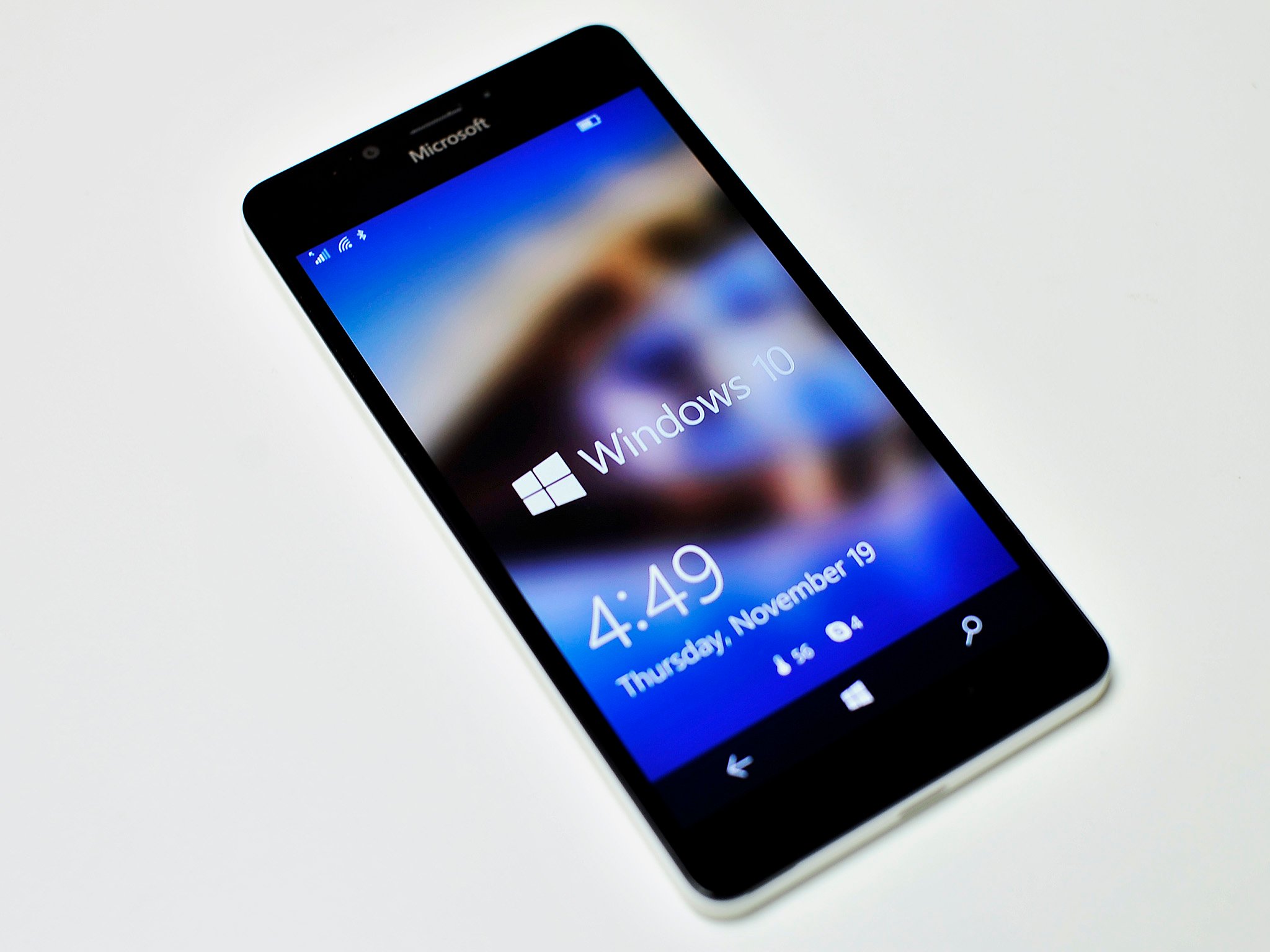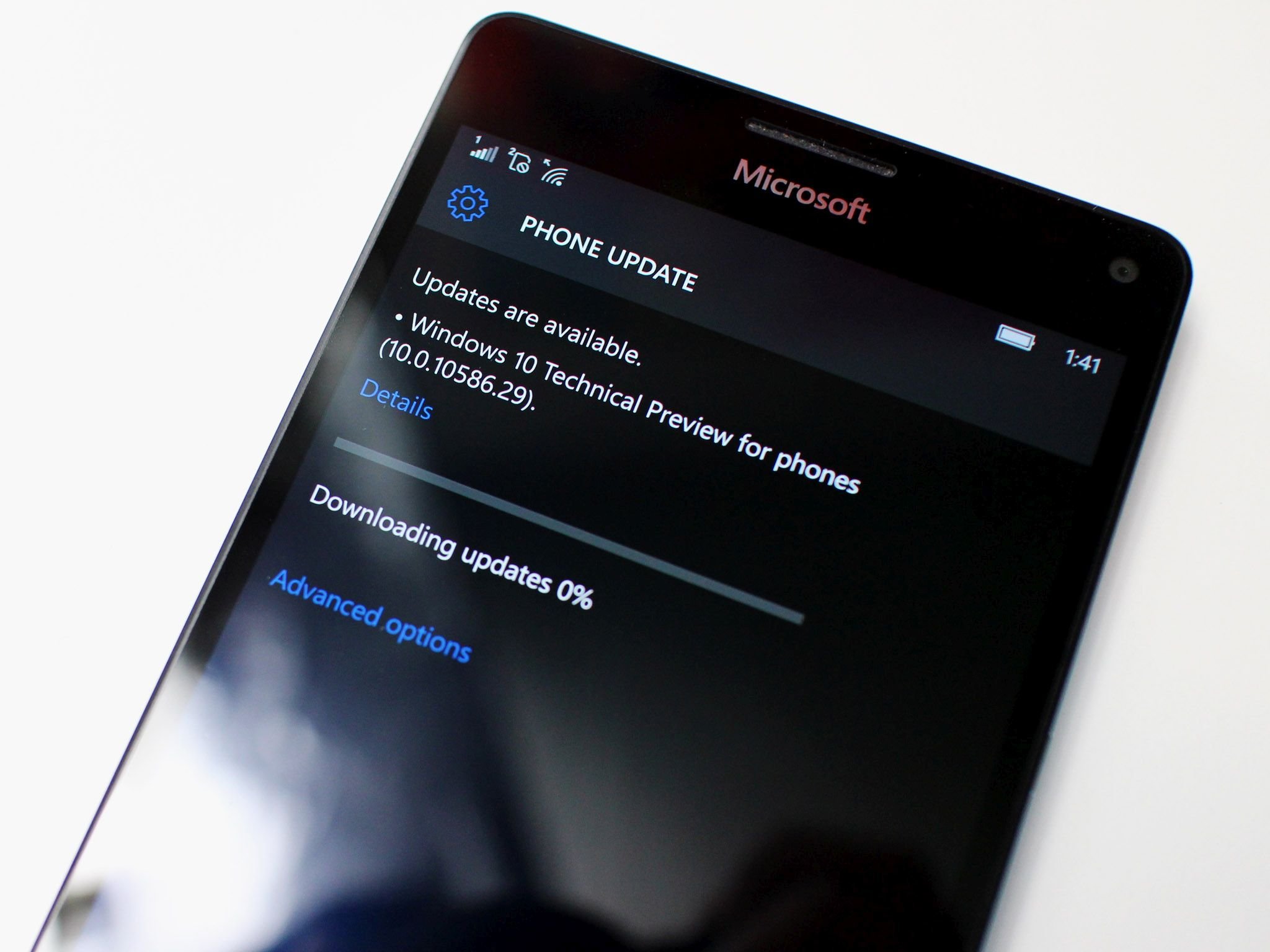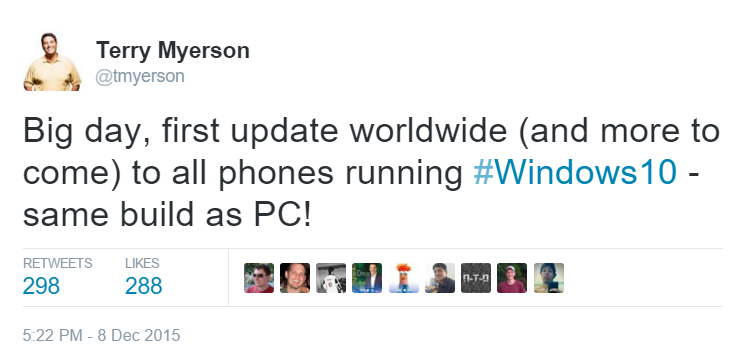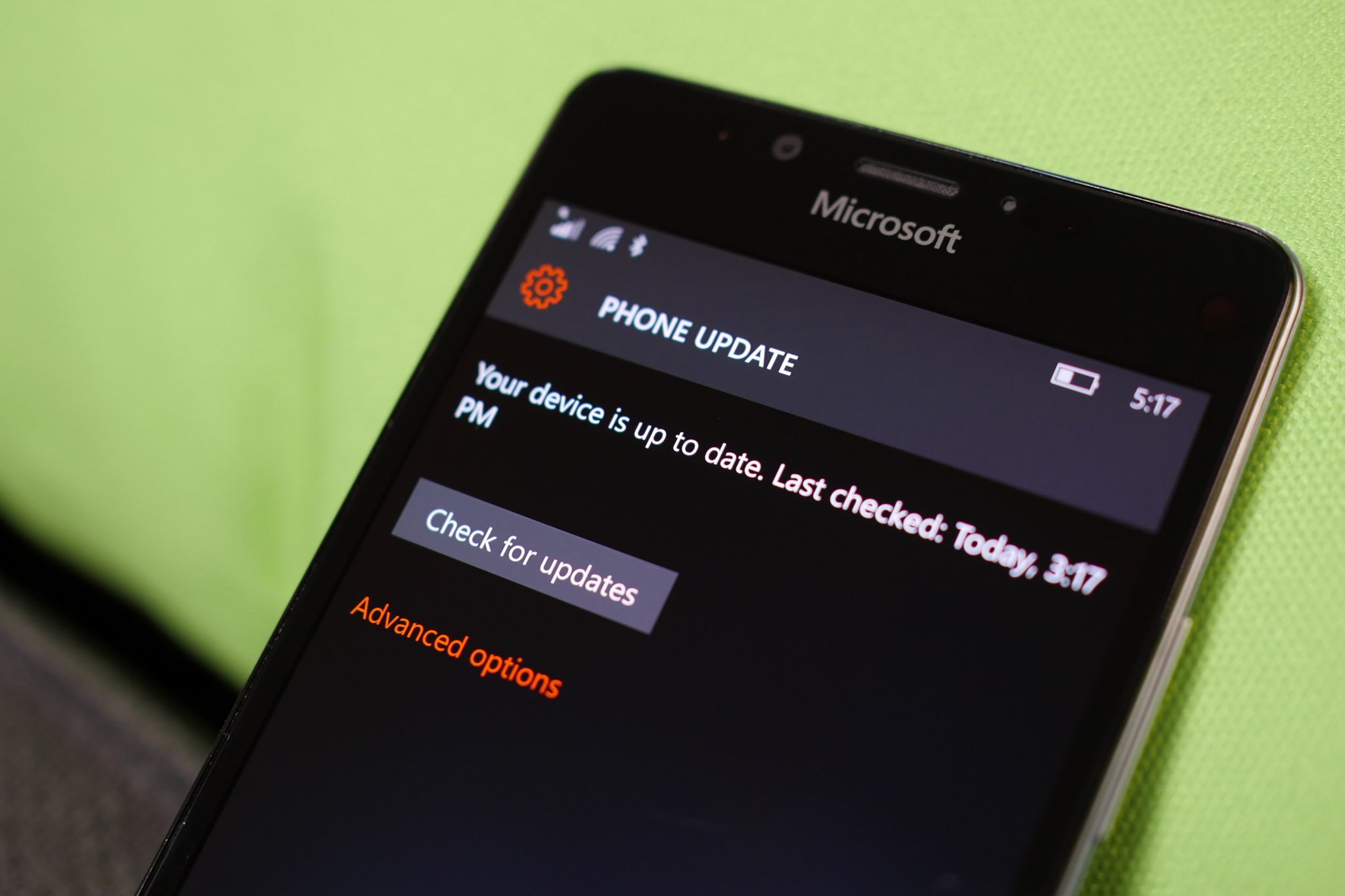Here is how Microsoft can push OS updates to Windows 10 Mobile without carriers now (and forever)
On December 8, 2015, Microsoft released Windows 10 and Windows 10 Mobile updates on a global scale testing the Windows as a Service (WaaS) model. Besides the syncing of cumulative OS updates between desktop and phone, the event revealed that carriers seem to be sidelined. Here is why that is and what changed between Windows Phone 8.1 and Windows 10 Mobile.

The reason for the excitement yesterday was the release of Windows 10 Mobile build 10586.29 to the Lumia 550, Lumia 950 and Lumia 950 XL including on AT&T, which came as a surprise.
Interestingly, the update itself is rather ho-hum with no new features, but a few important under the hood fixes. Most users are reporting better standby battery life, improved Bluetooth compatibility and a more enjoyable Edge experience. But let's be clear: there is nothing dramatic, dire, or security-related about this update that would require an emergency release. No, this is a standard cumulative update released on Patch Tuesday just like it was for the Windows 10 desktop.
Interestingly, both desktop and mobile were updated and are now on the same build. That is also another seminal moment as Windows 10 is truly just one operating system.
So why did carriers not hold up the update? Microsoft has been a bit coy on the process and carrier involvement. The only statement they have on the matter is one from earlier in the year:
"Microsoft is working closely with mobile operators to leverage their testing and our flighting to meet and exceed current quality bars. We will use their input but will decide when to send the updates out based on input from mobile operators and our Windows Insiders."
The standard reading of that is Microsoft can bypass carriers although those same carriers do have a seat at the table too. However, that statement didn't go so far as to sideline them completely either.
The other part of this is whether or not this was a one-time exception for AT&T or will we see a regular cadence of updates.
What's different in Windows 10 Mobile

Yesterday, Windows and Devices Executive Vice President Terry Myerson also Tweeted this bit:
Get the Windows Central Newsletter
All the latest news, reviews, and guides for Windows and Xbox diehards.
"Big day, first update worldwide (and more to come) to all phones running #Windows10 - same build as PC!"
The "more to come" is the important part, but it is not the crux of why things are now different with Windows 10 Mobile. Here is why this OS is dissimilar from Windows Phone 8.1.
A few people knowledgeable about the matter tell me that the radio stack is basically "blackboxed" in Windows 10 Mobile. As one person explained it:
"…the non-radio stack has been almost completely isolated from the radio stack (before the BSP contained a lot more "system" components); carriers need to test and certify updates that touch the radio stack, but MS can do the rest without their involvement."
Another person also mentioned how BlackBerry's BB10 OS was the first to do this, but now Windows 10 Mobile also shares the same OS architecture.

On the face of it, this all makes sense. If you are making 'one OS to rule them all' you want to develop all overlapping components for phone and PC, but keep the radio stack separate as it plays no part. Carving out the differences between the phone and PC builds lets Microsoft co-develop more of the OS, streamlining the process.
Taking this into account and things become a lot clearer. Windows 10 Mobile and Windows as a Service (WaaS) can go forward because the OS can be updated without any changes to the radio stack.
Carriers –especially in the US – claim to fear that a "rogue" update to phones could cause network instability. Of course, to my knowledge, this has never happened. Regardless, this is one of the reasons why carriers exert control over OS updates in the first place. If something is touching their network, they want to test that it meets their standards. With Windows 10 Mobile, once the phone is approved for the network by the carrier Microsoft can keep rolling out 'patch' updates to the OS and not get permission each time.
But what about...
Assuming this new architecture is accurate - and we believe it is - there are a few questions and caveats that remain, including:
- Firmware - It is not yet clear what role firmware updates play in the Windows as a Service model for Windows 10 Mobile. So far, Windows Phones seem to be doing quite well without the need for special updates to the firmware. In fact, it looks like Microsoft offloaded a lot from the firmware into the OS component, which is why they can deliver new features through the OS in the first place. However, there is a firmware element, and it is not yet clear if carriers will need to approve those. Then again, considering how rare firmware updates are these days, this may be less of a big deal.
- 8.1 upgrades to Windows 10 Mobile - Interestingly, once a phone is on Windows 10 Mobile it appears to be a hands-off experience for carriers. But the process to get an 8.1 phone to Windows 10 Mobile does not appear to be so easy as just updating an in-situ Windows 10 Mobile OS. Here we are presuming that the radio components are changed with this update, expected to start this month, and carriers need to approve that initial step just like before. This process is why "upgrades" to Windows 10 Mobile are less definite carriers still play the gatekeeper role. (Obviously, unlocked phones do not fall into this quandary).
- Why no Verizon, etc.? - What is also not clear is what role, if any, did any of this play in getting the Lumia 950 and Lumia 950 XL on certain carriers. I have speculated in the past that Microsoft may have gone with AT&T due to the carrier agreeing to let them have more free reign with updates. However, the model described above dilutes that argument a bit since presumably carriers perceive a lower risk. On the other hand, carriers could still not oppose such an upgrade system if they are stringent on testing. Whether WaaS and Windows 10 Mobile played a part in any of this is still unclear, but it cannot be ruled out either. I think Microsoft does not want any Lumia "left behind" with Windows 10 Mobile making it a non-negotiable demand to carriers. Plausible alternative argument: Carriers just don't care about Windows Phones and passed.
The question to the firmware update should be answered in the coming months as the Lumia 550, Lumia 950, and Lumia 950 XL being to mature. Luckily, if you have been a part of the Insider program, you may have noticed that Microsoft can do a lot just through OS updates and no firmware including bringing back Hey Cortana for supported hardware.
A big step forward

While there has been speculation and careful readings of what Microsoft has stated about OS updates the proof is what happened yesterday with a global rollout of a cumulative update to Windows 10 and Windows 10 Mobile. This vision by Microsoft has been talked about, but it many ways December 8, 2015, was the moment where it all came together.
I do agree that we'll have to see just how often these updates are pushed to mobile to really prove the model, but, at least, Myerson's "more to come" suggests this is not a one-off. Indeed, many Windows Phone users are skeptical of AT&T who has blocked Lumia updates in the past, so the burden is on them. If the AT&T Lumia 950 continues to get updates and it keeps in sync with its non-carrier version then things are truly different.
That is not to say there have not been issues either, as we reported some Lumia 950's were unable to get yesterday's update (or even on the Insider program). There is no doubt that Microsoft will be collecting and dissecting a lot of analytics over this and other updates to improve the process going forward.
The bottom line is that Windows 10 Mobile and regular OS updates now appears to be a real thing. Yesterday was but one step in that direction, and we'll be watching closely in the following months to see if what we described here is the strategy going forward. For Microsoft fans, however, this looks to be the hallelujah moment we have all been waiting for.

Daniel Rubino is the Editor-in-chief of Windows Central. He is also the head reviewer, podcast co-host, and analyst. He has been covering Microsoft since 2007 when this site was called WMExperts (and later Windows Phone Central). His interests include Windows, laptops, next-gen computing, and wearable tech. He has reviewed laptops for over 10 years and is particularly fond of 2-in-1 convertibles, Arm64 processors, new form factors, and thin-and-light PCs. Before all this tech stuff, he worked on a Ph.D. in linguistics, performed polysomnographs in NYC, and was a motion-picture operator for 17 years.
